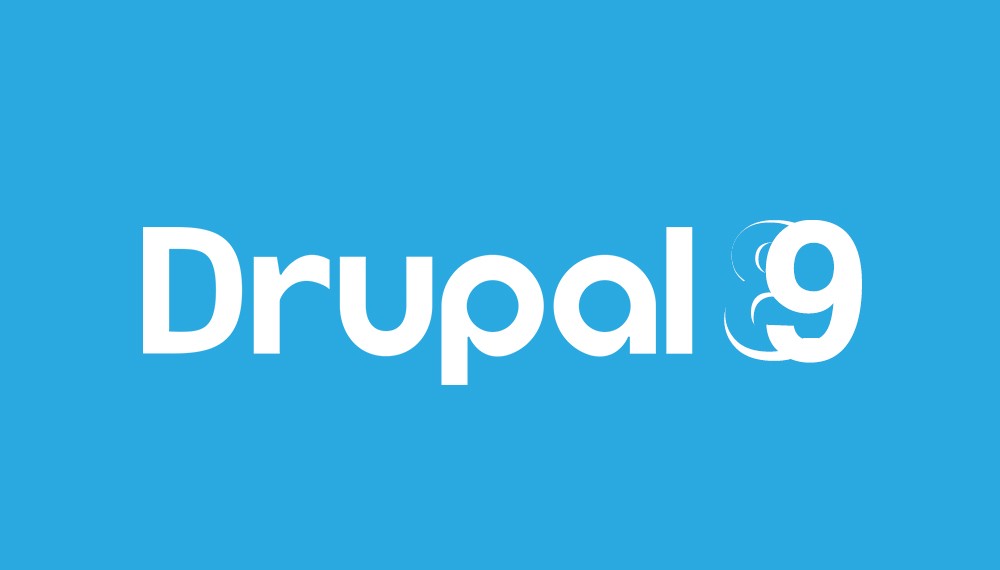
We must register in Pantheon.io at the following link: https://pantheon.io/register


Once the account has been created, click on “Create New Site”. This will take you to a new tab.

We put the name we want to the site (it is recommended to put a unique name, since there are several different sites and this will make it easier to find). Separate the page name by hyphens. After choosing the name, the region for the site is chosen, the closer to where you are the better.

The next step is to choose a CMS. There will be 3 options. The option we are going to choose is “Drupal with composer”. (Composer is a package manager for php) with this option you can download modules for Drupal. Click on deploy.

Pantheon gives us the option to work in separate environments, which can be found in the upper left corner and are the development environment (Dev), the test environment (Test) and the production environment (Live). If the account used is not paid, you will only have access to the Dev and Test. But we will focus only on the development environment.
The importance of separating environments is when working as a team, if you are in the development environment and someone wants to run a test, they can do so without one intervening in the other's process.
Now we click on “visit development site”.

Now we can see how Drupal looks like when we have it installed on a server.
The first thing that will appear is to choose the language that will be used.
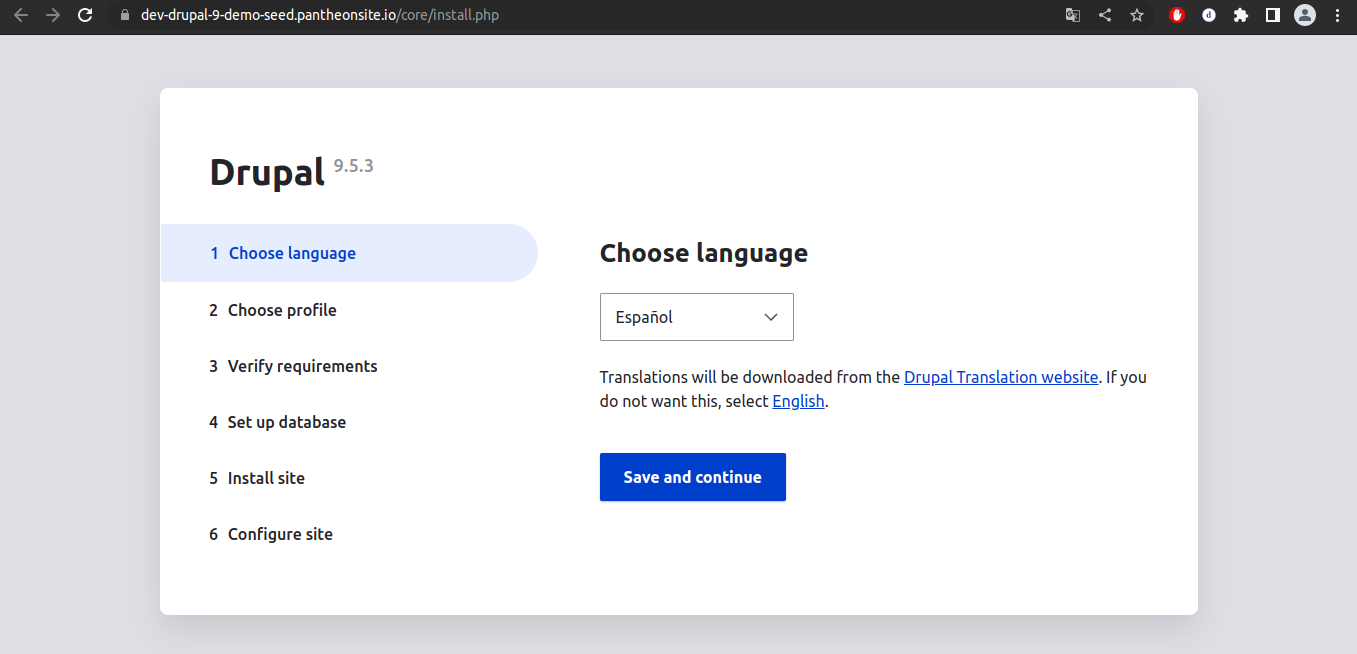
The next step is to choose one of the 3 installation profiles. The standard and minimum profiles are chosen when managing Drupal from scratch.
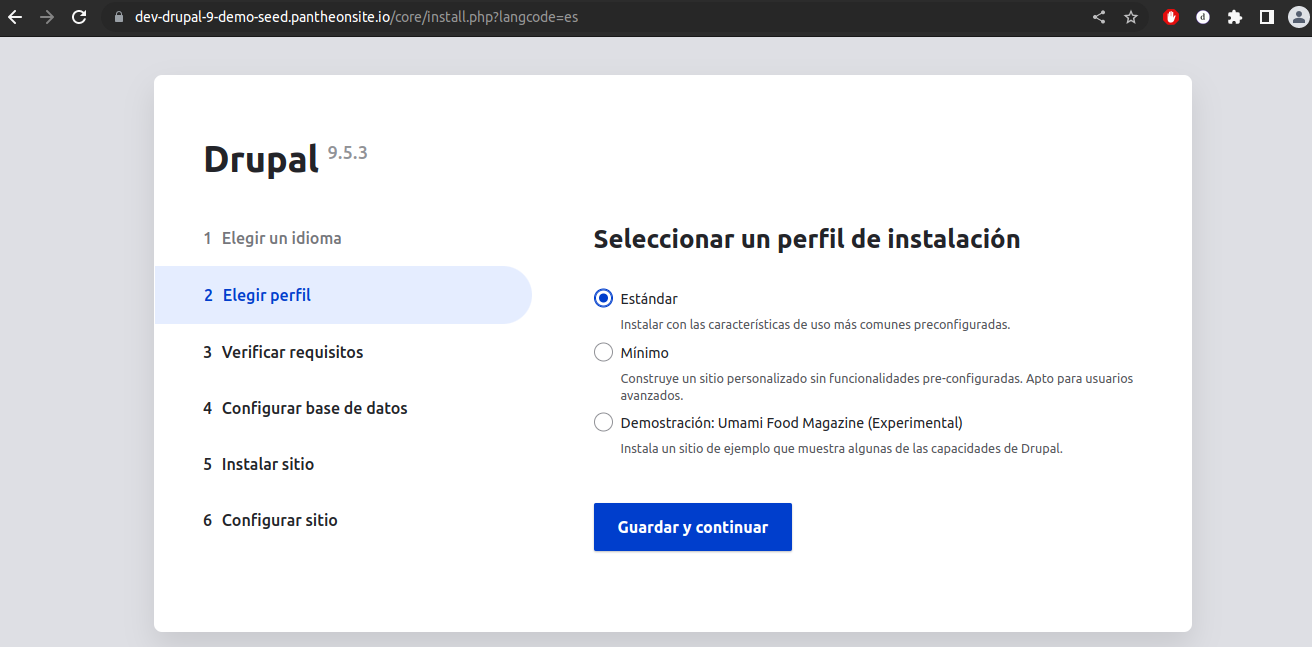
When you choose an option, Drupal will be installed, if you choose it in another language (such as Spanish) the translations of the core modules, the contributed modules and the customizable modes are downloaded. There are also 3 themes, the core ones, the contributed ones, and customizable ones.
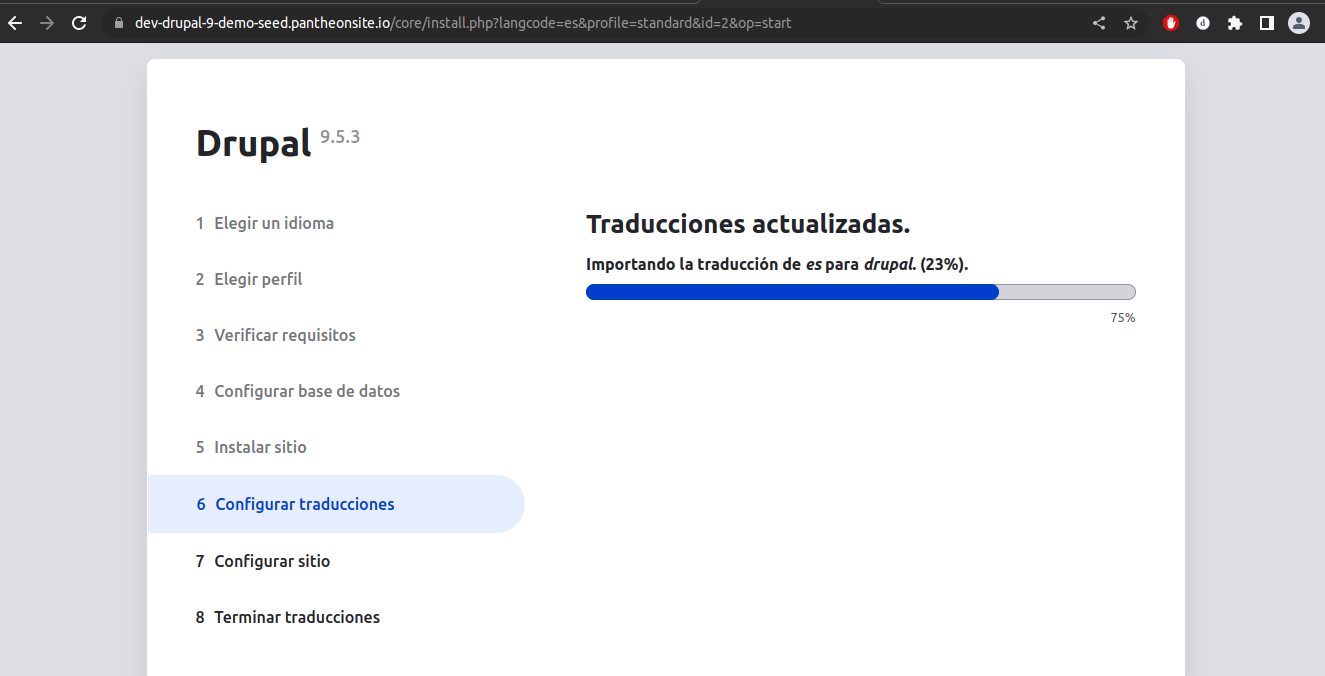
Once the site is installed and the language is downloaded, it will be given the name it will have and the email address that will be used. It is preferable that the domain used is that of the same page. We enter the username and password. This will measure how secure the password you set is.
We enter the email address again and choose the country from which the page is being created. This is used to locate the time. We finish by clicking on “save and continue.”
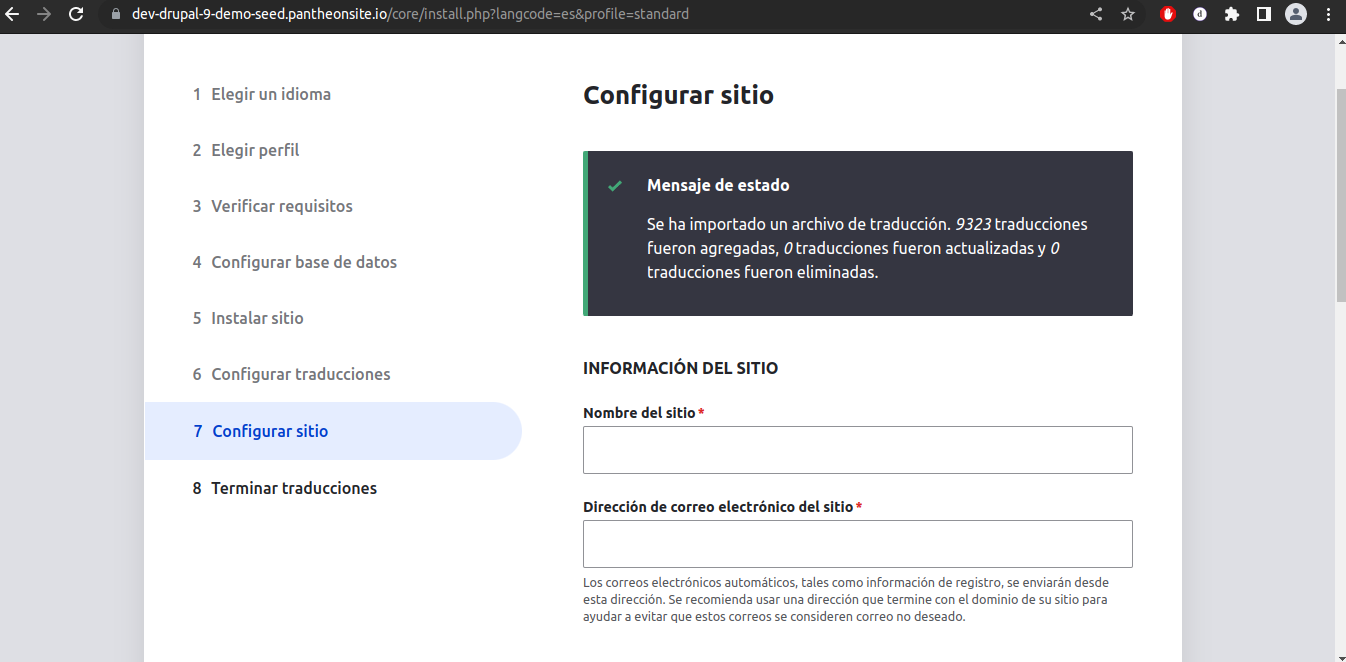
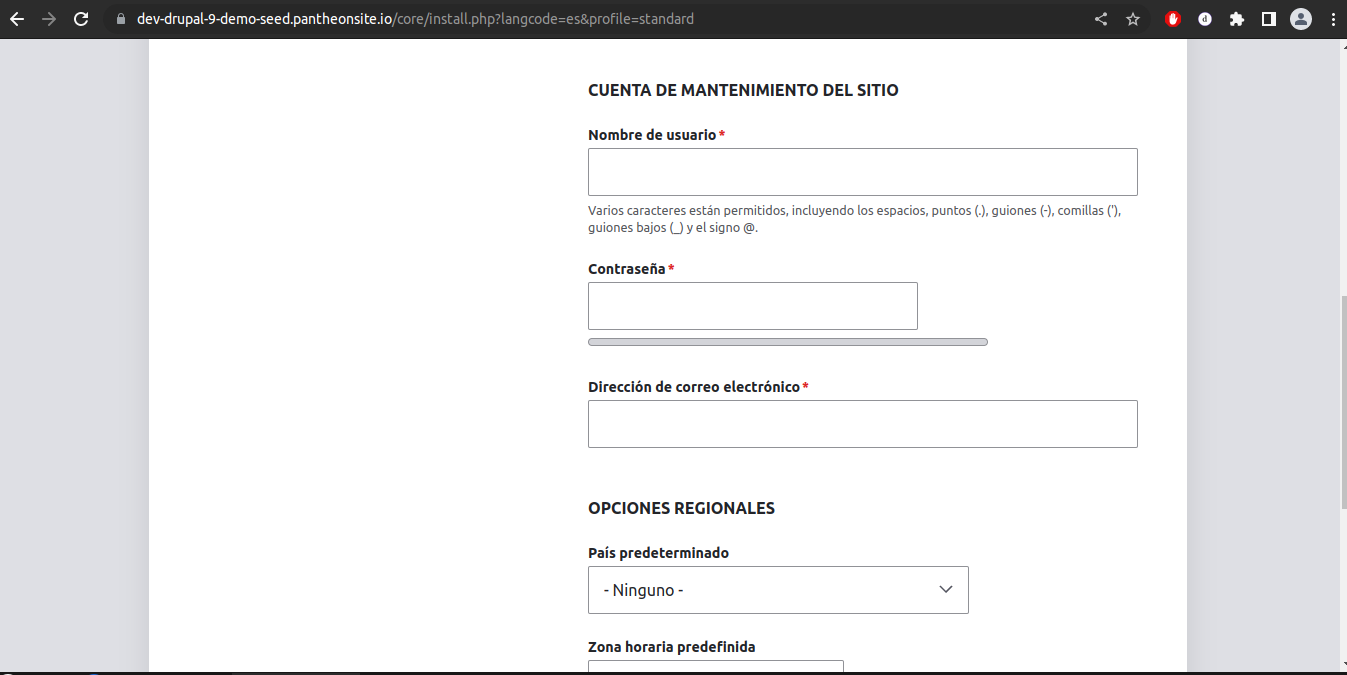
The information is updated, and we wait for it to finish configuring. Once finished we have Drupal installed and it can be used to build the site
Once installed you can use all Drupal accesses to build or modify the website.
